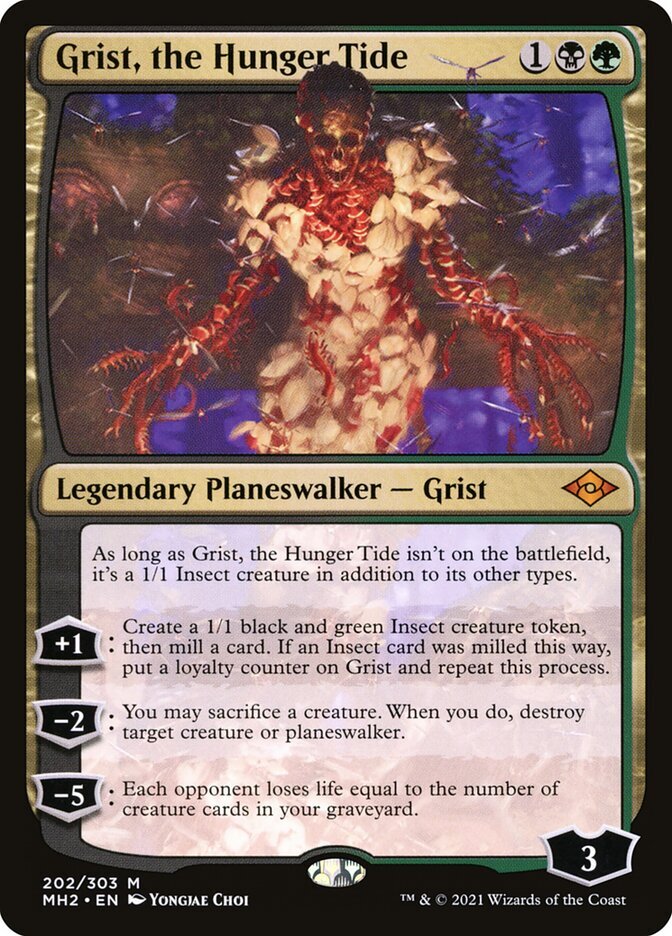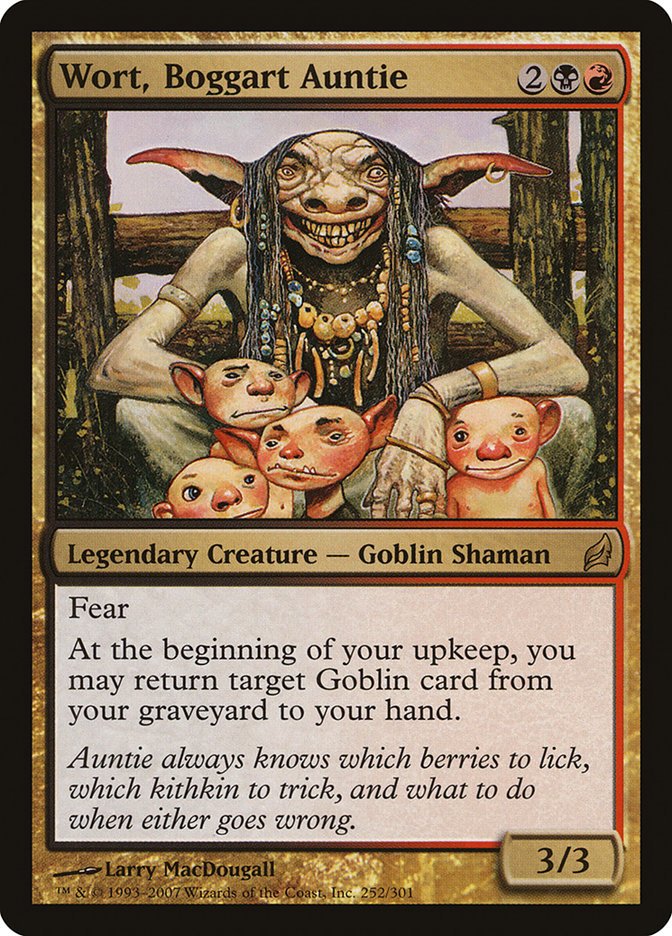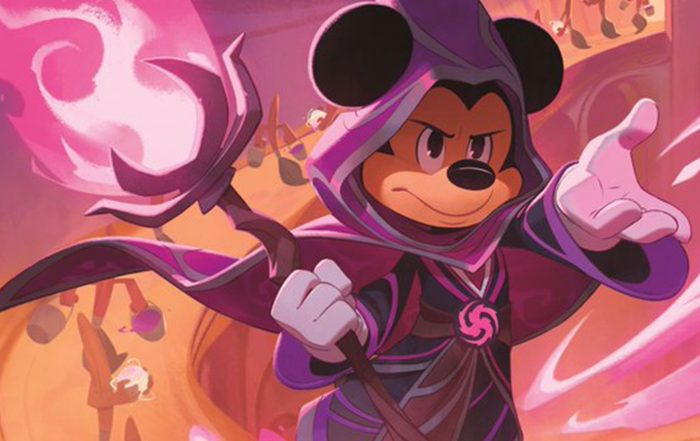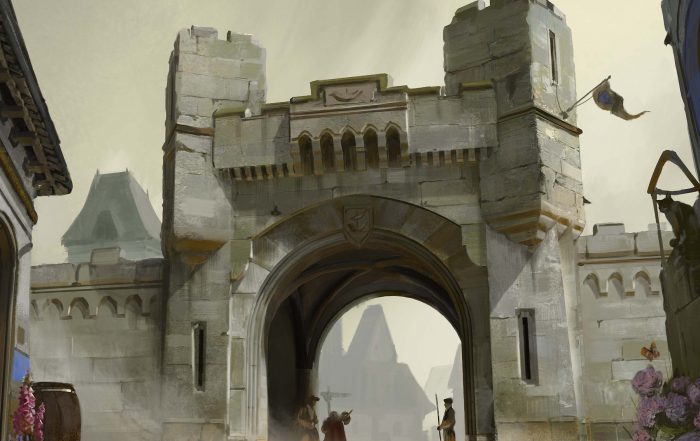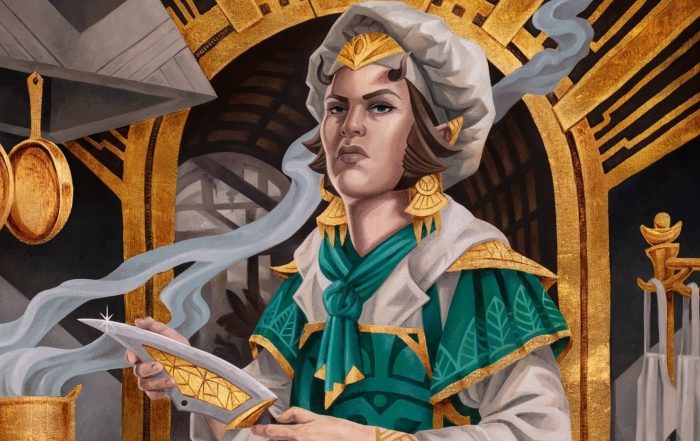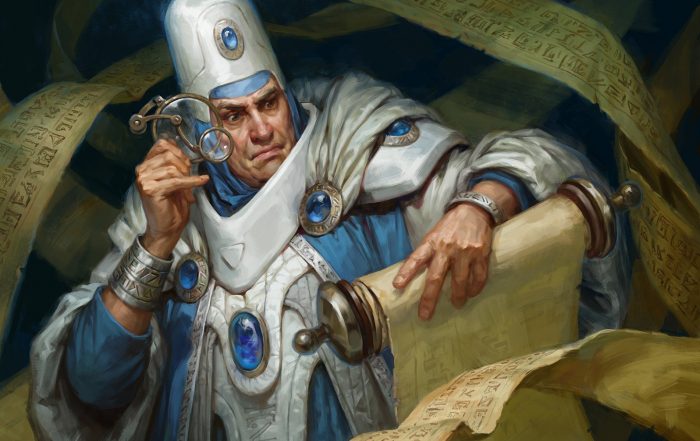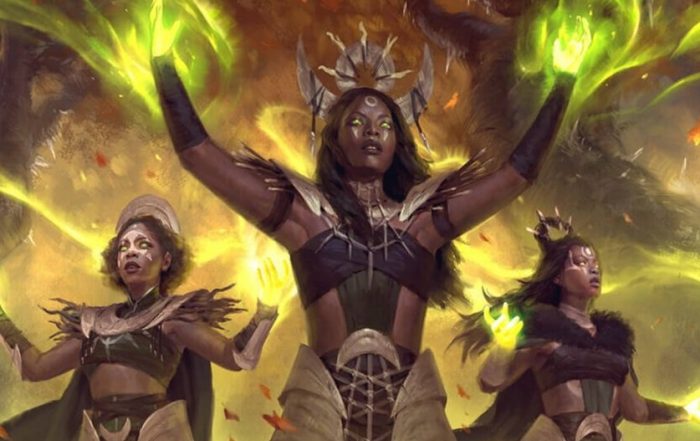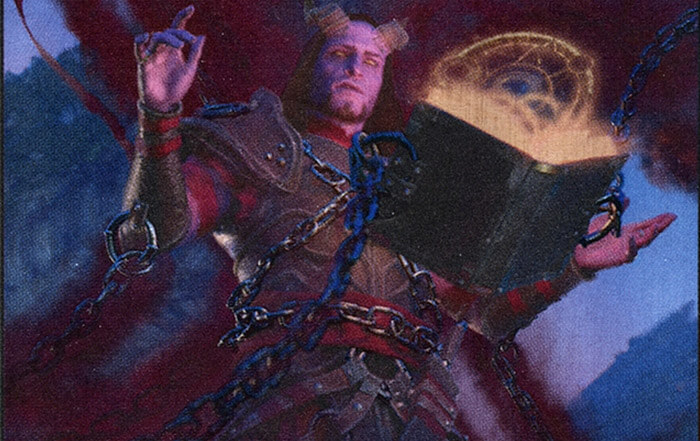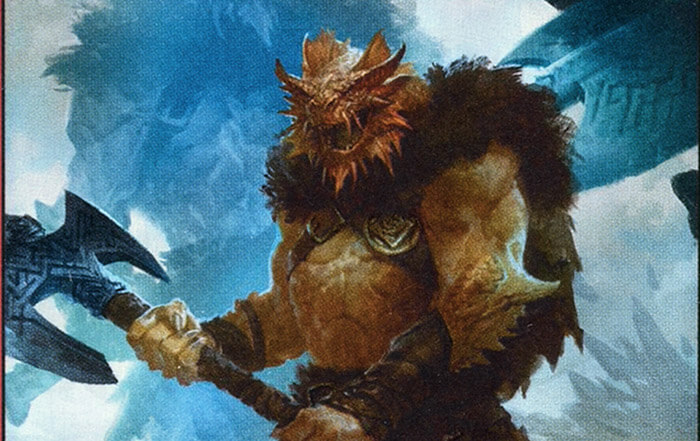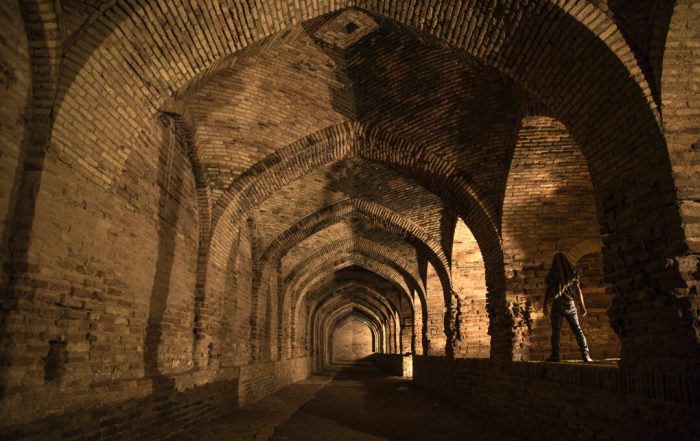Commander Deck Tech: Goblins
Rise of the Squeemortals
Sacrifice for the greater good
Author: David Merker-Schwendinger
After all my fellow gamers had switched to the Commander format, it was also time for me to create a 100-card deck and venture into uncharted waters.
My previous decks and playstyle were mostly aimed at causing chaos, testing the pain and tolerance limits of the opponent, and surviving long enough for them to throw in the towel in exasperation.
A deck is born
This consideration formed the basis of my deck, which went through several phases of development and change. Since a nice and round lore for my own creations was always important to me, at the beginning there was the idea of how I could implement a Land-destruction and Sacrificedeck.
The first idea I had was an insect and rot set that used Grist, the Hunger Tide as commander. Since the Black-Green combination worked well with Sacrifice mechanics (especially since the Ravnica edition) but left me relatively few options for land destruction, a combination with Red became more and more likely. So, I first stranded myself with Shattergang Brothers, which offer three solid options for sacrifice mechanics.
After a few trial games, in which the three-color combination worked well, I thought further about which creature types were declared “annoying” and “destructive” in various fantasy areas. The Shattergang Brothers already had that creature type, Goblin. In order to generate enough tokens and be able to sacrifice them usefully, I changed the color combination to black-red, classic for destruction and anarchy.
The deck itself is not a highly optimized fast-to- and play-to-win deck, rather one that slowly but steadily wears down the opponent and builds on the fact that sooner or later mistakes are made that reveal a weakness that can be exploited.
So, the deck follows the motto: bombard the walls until they break and then penetrate through the hole.
Decklist
Goblins
Commander
Creatures
Enchantments
Spells
Artifacts
Lands
Lead the mob
A good two-colored Goblin commander to put away Boardwipes and other single destructions seemed to me to be Wort, Boggart Auntie.
For 2BR, this 3/3 Goblin creature lets us get a Goblin back from the graveyard every upkeep. It also has fear, which sometimes makes it easier to deal command damage.
Wake up the horde
Besides the commander, there are 30 other creatures in the deck, mostly goblins but also other types, which form a good synergy with the basic idea of the deck.
Starting with the idea that there has to be a steady supply of goblins to burn up, nine creatures serve the deck:
- The Legion Warboss as well as the Rabblemaster force us to play aggressively and to continuously put pressure on the opponent – even with small creatures – if we don’t sacrifice them beforehand. Even if only one point of damage is caused, it’s the summation that counts in the end.
- With Pashalik, we can create two Goblin Tokens out of one Goblin and 3R.
- The marauding Krenko creates us a 1/1 red Goblintoken for every +1/+1 token on him.
- After he upgrades to Mob Boss, he can multiply the Goblins that are in play under our control.
- The Boggart Mob works well with the aggression that the Goblins can display. Each Goblin that is not blocked passively creates a black 1/1 Goblin Rogue token.
- The Trumpeter Morph creates us X 1/1 Goblin Tokens for XXR once it is revealed.
- Last but not least, not only because of the fantastic illustration which makes me laugh every time, the Siege-Gang Commander has to be mentioned. As soon as he comes into play, he creates three Goblin tokens. Its active ability to sacrifice a Goblin for 1R and inflict two damage to a creature or player lets the player, should one prefer a passive style, quickly put the tokens put into play by other cards into the graveyard in order to reduce their life points over the opponent’s defense.
Take what you need
To get the right Goblins in the deck, Goblin Recruiter and Boggart Harbinger are of solid use. The former lets us search for any number of goblins from the deck for the cost of 1R, the latter one for 2B
These two can lead us to the classic Endless combo, which consists of Conspicuous Snoop, Kiki-Jiki, Mirror Breaker, and a random Goblin. The idea behind this is to create infinite tokens that can be sacrificed to inflict damage.
To support this, Mayhem Devil, Goblin Sharpshooter or Torbran, Thane of Red Fell are useful. Torbran increases the damage inflicted by red sources, the Devil inflicts a point of damage to any target when a player sacrifices a permanent card, and the Goblin Sharpshooter – with great design, of course – inflicts a point of damage with tap but can be untapped with any creature that dies.
Three creatures included in the deck push the power of your creatures: Mad Auntie, Goblin Chieftain, and Judith, the Scourge Diva. The two Goblins increase their own “Squishlings” by +1/+1, Judith increases other creatures by +1/+0. The Chieftain additionally gives haste, which pushes the aggression.
Sacrificing your own creatures is, as already underlined, a big point in the deck, seven creatures target it. The Butcher of Malakir and Priest of Forgotten Gods damage the opponent and force them to sacrifice a creature as well without needing an additional enchantment. The Vermin Gorger provides us with a small number of life points, the Skirk Prospector with mana, the Goblin Lookout boosts the mob.
If you now target the opponent’s mana base, the Earthblighter is necessary, as are the Orcish Settlers. Two creatures are largely self-contained when it comes to returning from the afterlife – Squee, the Immortal, and Endless Cockroaches.
Should most strings snap to bring back creatures, the Warrior Alesha, Who Smiles at Death is in focus alongside Wort. For BB, as soon as Alesha attacks, a creature that has less power than 2, which is quickly true in Goblin tribal decks, can be returned to play attacking.
Enchant yourself
Eighteen enchantments provide the deck with various abilities and different uses, which can be adapted to the respective play style. Three of them, Goblin Warrens, Goblin Assault, and Goblinslide, provide us with goblin tokens that serve as cannon fodder.
The Goblin Shrine and Quest for the Goblin Lord boost your mob, which is a good base for one of the artifacts in the deck. Two other cards, Boggart Shenanigans, and Goblin Bombardment work hand in hand with the Snoop combo and other sacrifice mechanics to generate damage on the side.
Five enchantments focus on land destruction, or scorched earth principle if you want to call it that: Blood Moon, Impending Disaster, Price of Glory, Desolation, and Shivan Harvest.
Once you’ve built yourself a solid creature base, losing lands yourself doesn’t hurt much. Against decks that include a lot of fetch or sacrifice lands, Blood Moon has proven itself time and time again.
Attrition and Vampiric Rites let us sacrifice creatures to draw cards or destroy another creature. Dictate of Erebos or Grave Pact are similar to Butcher of Malakir and ensure that every creature you own takes also enemy creature down.
The last two enchantments, Curse of Shaken Faith and Vicious Shadows inflict passive damage on the enemy. The Shadows combine well with the sacrifice mechanic, inflicting double damage when you sacrifice a creature and your opponent sacrifices a creature.
Destroy their homeland
Six of the spells in the deck target the opponent’s lands. Rancid Earth is one of the few black cards in the deck that allows you to destroy enemy lands.
Jokulhaups is the only complete boardwipe in the deck, Wake of Destruction, Bend or Break, Thoughts of Ruin and Stone Rain give us a wide range of options to set the opponent back, or reset the game completely.
Dragon Fodder, Krenko’s Command, and Hordeling Outburst create goblin tokens for a low mana cost that we can sacrifice immediately. Grim Discovery can return a creature and a land from the graveyard to the hand, Blood for Bones lets us sacrifice a creature to return a creature to the field and another to the hand. Bedevil and Bone Shards are the only spells that can specifically destroy a single card, the latter supporting the sacrificing tactic of the deck.
What else do we need?
After it became obvious that land destruction(s) will take place, almost certainly with collateral damage, Crucible of Worlds is necessary.
Ashnod’s Altar, Altar of Dementia, and the Eldrazi Monument give us three options for sacrificing creatures. Altar of Dementia can be combined with the buffed goblins that can be mass-created with Krenko, Ashnod’s Altar generates two colorless mana for each sacrificed creature, as does Sol Ring.
In some games, early turns of land destruction could build up one’s advantage so massively that victory became inevitable; in multiplayer games with a longer-term build-up, it was no longer easy to build on the destruction of lands, rather on the sacrifice mechanics and their passive damage output, as well as the destruction of the opponent’s creatures.
On the other hand, destruction-based decks could quickly take the air out of this commander deck’s sails if creatures were continuously destroyed before they can unleash their utility. However, I enjoy every game with this deck, as there is a wide range of possibilities to explore and penetrate the opponent’s weak points.
About the Author
David Merker-Schwendinger started playing Magic: The Gathering as a teenager. His first Deck was a Mirrodin Preconstructed Deck.
Over the years, he developed an interest in role-playing games, which was sparked during his Archeological studies at university.
The Magic card collection kept growing during his Master studies of Austrian history. Some topics he studied, like heraldic, came in handy for his role-playing storytelling.
He is the host of a YouTube channel (NerdNavigator) where he features the Austrian D&D community and Dungeons’ and Dragons in general.
Booster Drafting with friends and exploring Ravnica with his Dungeon and Dragons party are among his favorite things to do in his free time.

All Articles by David Merker-Schwendinger
How To Play Disney Lorcana
Here's everything you need to know about the gameplay of the new card game Disney Lorcana. In our latest article, David explains to you everything you need to know about Ink, Glimmer, turn structure, card types and anything else surrounding the gameplay of Lorcana.
Commander Legends 2 – Battle for Baldur’s Gate
Commander Legends 2: Battle for Baldur's Gate released a few weeks ago. Our author David takes a closer look at the set and tells us about what Beasts, Dragons and other mythical creatures he is really excited about!
Streets of New Capenna: The Most Powerful Commanders
Streets of New Capenna is out right now and with it come a few really strong Commanders! In this blog entry, we are going to present you the most powerful Commanders from Streets of New Commander. Maybe you get to play some of them before they eventually get banned?
The Best Underrated & Most Overrated Commanders
In today’s article, David is taking a closer look at the Commander table and filters through different choices for the top leaders of current decks. If you’re interested in getting to know his picks for the best underrated and the most overrated Commanders in Magic: The Gathering, keep on reading right here.
The Best 5 Commanders in 2022
David is presenting his top 5 list of Commanders he thinks who are the strongest choices, he is not yet playing in Commander. From funky picks to powerful format mainstays. There's a legend for everyone.
Commander Deck Tech: Goblins
Squee and his minions are David's favorite Commander deck at the moment. Read what makes the deck work and what combos you can pull off with it.
Ninjas in Legacy
Tribal decks in Magic the Gathering are fun. What is more fun than the Ninja tribe? Not much. Sneak your way to victory in Legacy with this version of Ninjas, including tips, tricks and a sideboard guide by the Master Ninja, Zen Takahashi
Review Innistrad: Midnight Hunt Commander Deck – Part 2
Magic the Gathering's latest release, Innistrad: Midnight Hunt, comes with a new Commander Deck as well. The main theme of Coven Counters Unleashed is, different powers among your creatures to trigger the new Coven keyword. David is giving the deck a test drive and shares what he thinks about it.
Review Innistrad: Midnight Hunt Commander Deck – Part 1
Magic the Gathering's latest release, Innistrad: Midnight Hunt, comes with a new Commander Deck as well. The main theme of Undead Unleashed is, you probably have guessed it already: ZOMBIES! David is giving the deck a test drive and shares what he thinks about the deck.
Review D&D Commander Decks – Part 2
David is back to try and test the remaining two AFR Commander Decks. Find out if this is a good investment for avid Magic the Gathering Commander players or if you should put your money elsewhere.
Review D&D Commander Decks – Part 1
David is back, and he not only checked out one or two of the four Commander Decks from Adventures in the Forgotten Realms. No, he tried all FOUR of them. Today, in Part 1 he starts with the first two and next week the other two will follow.
Magic goes Dungeons & Dragons
David will show you around Magic's first crossover set that ventures in the world of Dungeons and Dragons. He will explain the set that's called Adventures of the Forgotten Realms from a role-players view
